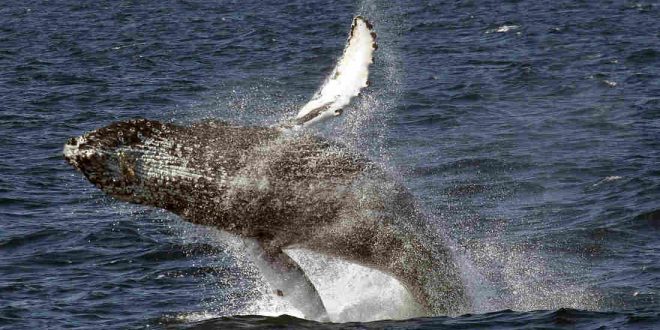Humpback whales have made an epic return after being hunted to the brink of extinction in several areas.
Most of world’s humpback populations have finally been removed from the endangered species list, the National Oceanic and Atmospheric Administration announced Tuesday.
International agreements to protect and conserve the whales over the past 40 years have proven successful for most populations, NOAA said. Meanwhile, four of the distinct population segments are still considered endangered on the U.S. list, and one is now listed as threatened.
Although they’re coming off the U.S. endangered species list, the whales are still protected. The International Whaling Commission’s whaling moratorium, imposed in 1982, played a major role in the comeback of humpback whales and remains in effect.
Whales once roamed oceans and seas around the world. Humpbacks known to migrate 16,000 miles (25,000 km) each year, and the males have complex songs – possibly used in mating – lasting up to 20 minutes and repeated for hours at a time.
Scientists have become increasingly aware that these creatures are capable of sophisticated thinking, decision-making and problem-solving. But – beginning hundreds of years ago and especially in the 20th century – commercial whaling severely reduced humpback whale numbers.
The United States listed all humpback whales as endangered in 1970. NOAA Fisheries worked nationally and internationally to identify and apply protections for humpback whales. Removing them from the list doesn’t mean the whales will be hunted again, but it does means their populations have rebounded successfully. Huzzah!
Eileen Sobeck, assistant NOAA administrator for fisheries, said:
Today’s news is a true ecological success story.
Whales, including the humpback, serve an important role in our marine environment. Separately managing humpback whale populations that are largely independent of each other allows us to tailor conservation approaches for each population.
Agencies/Canadajournal
 Canada Journal – News of the World Articles and videos to bring you the biggest Canadian news stories from across the country every day
Canada Journal – News of the World Articles and videos to bring you the biggest Canadian news stories from across the country every day



